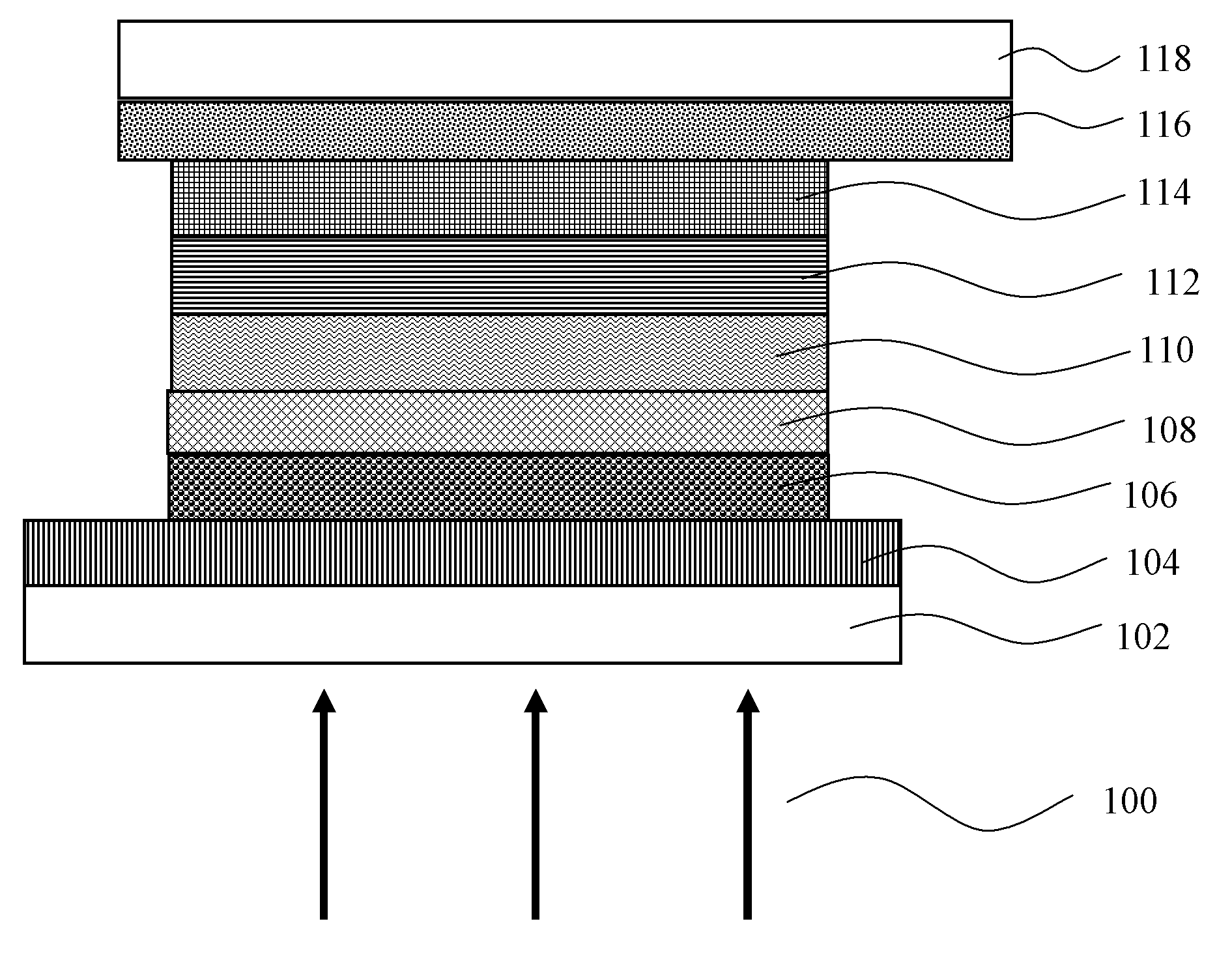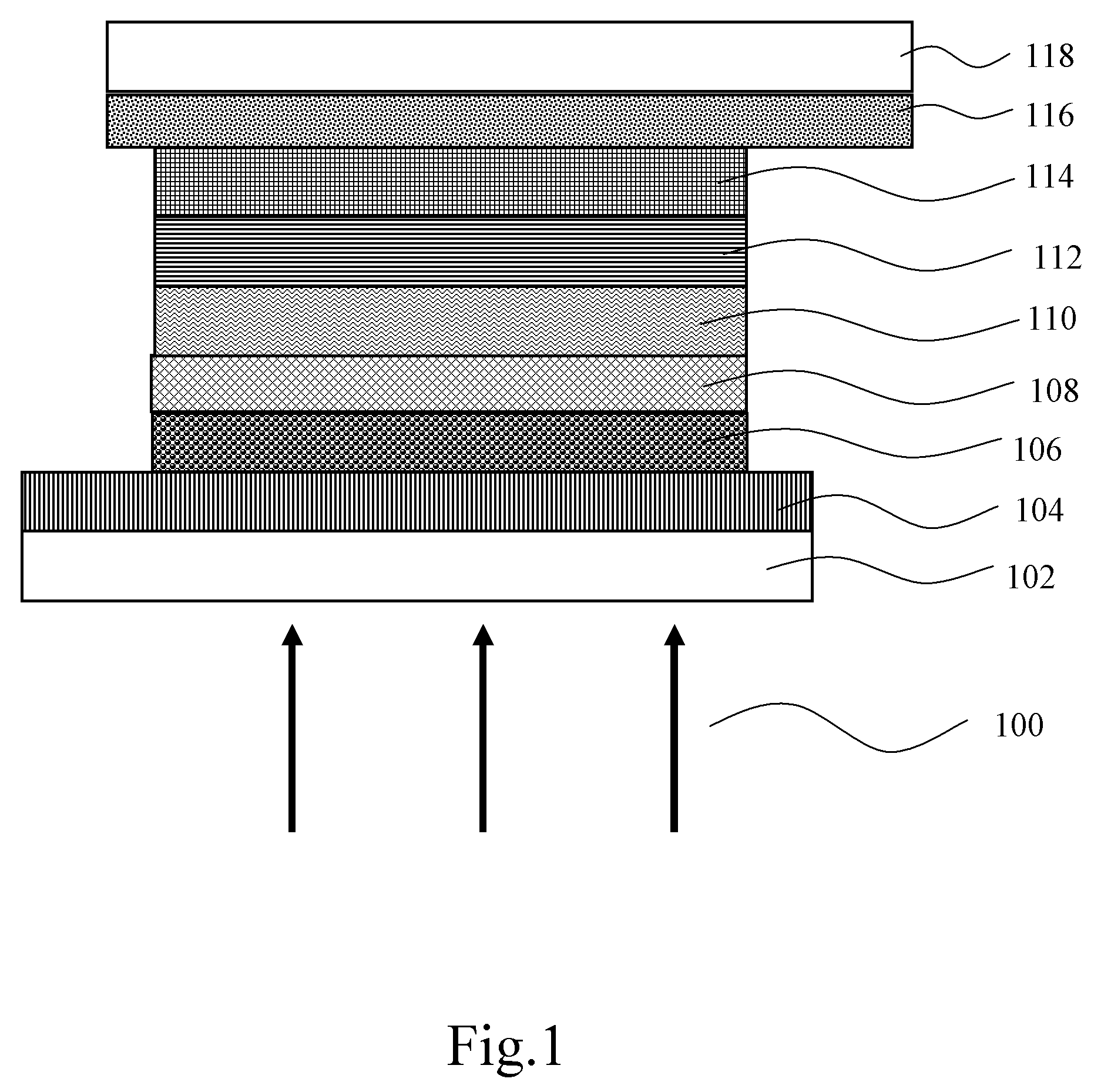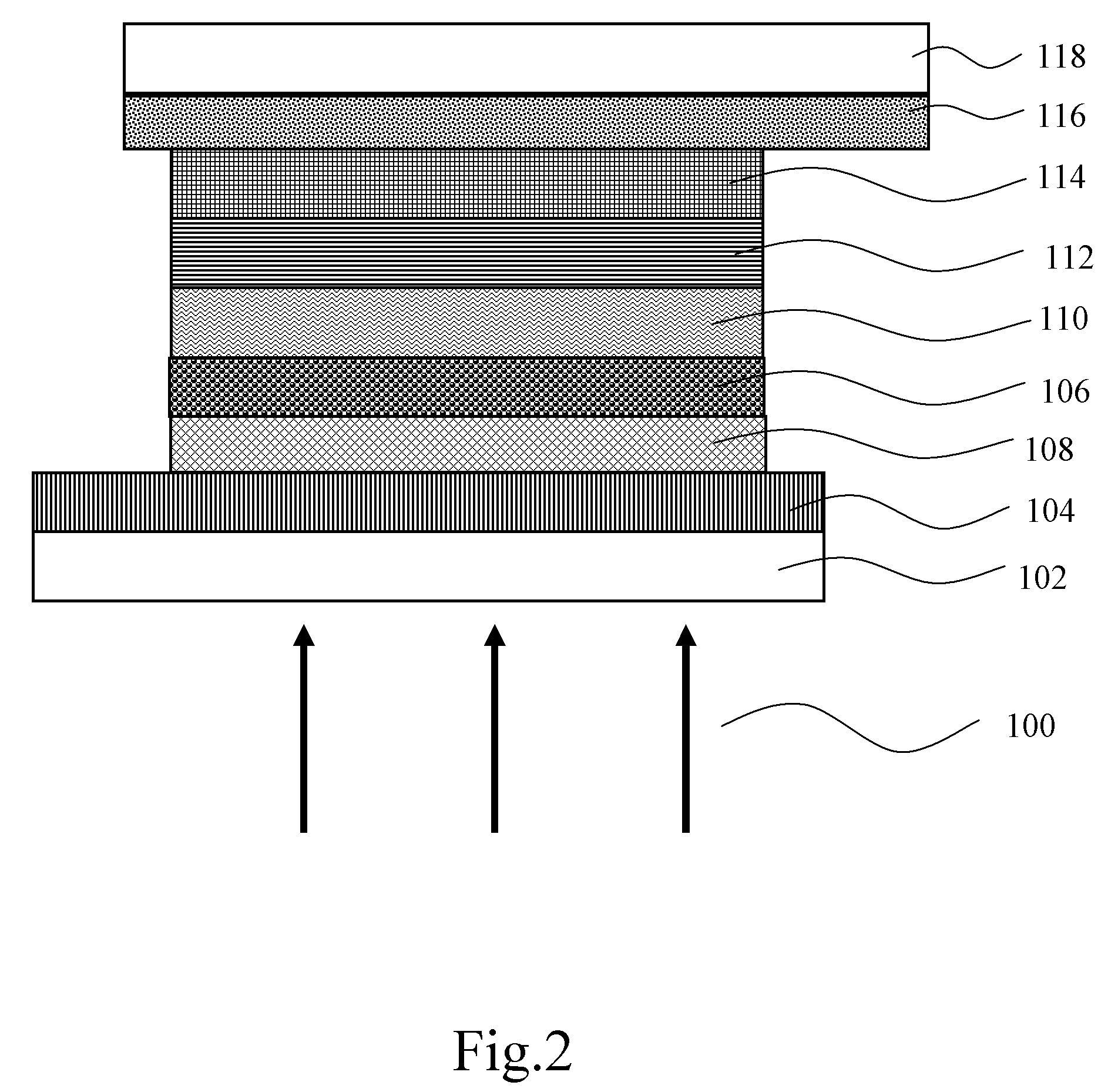Dye-sensitized solar cell
a solar cell and dye-sensitized technology, applied in the field of solar cells, can solve the problems of dye-sensitized solar cells, which have gradually become hot research problems, and are limited to some special applications, and achieve the effect of improving the efficiency of elements and improving the injection efficiency of electrons
- Summary
- Abstract
- Description
- Claims
- Application Information
AI Technical Summary
Benefits of technology
Problems solved by technology
Method used
Image
Examples
Embodiment Construction
[0021]Referring to FIG. 1, it is a schematic cross-sectional view of a structure of a dye-sensitized solar cell according to the present invention. As shown in FIG. 1, the dye-sensitized solar cell sequentially includes a first substrate 102, a first electrode layer 104, an electron transport layer 106, an energy-level intermediary layer 108, a photosensitive dye layer 110, an electrolyte 112, a second electrode layer 114, a transparent electrode 116, and a second substrate 118.
[0022]In an embodiment of the present invention, the first electrode layer 104 is a transparent conductive glass, and the material of the transparent conductive glass is a glass with a conductive film of fluorine-doped tin dioxide (SnO2: F) or indium-tin oxide (ITO) plated thereon.
[0023]In this embodiment, the electron transport layer 106 is disposed between the first electrode layer 104 and the energy-level intermediary layer 108, and the electron transport layer 106 is made of titanium dioxide (TiO2). Alter...
PUM
 Login to View More
Login to View More Abstract
Description
Claims
Application Information
 Login to View More
Login to View More - R&D
- Intellectual Property
- Life Sciences
- Materials
- Tech Scout
- Unparalleled Data Quality
- Higher Quality Content
- 60% Fewer Hallucinations
Browse by: Latest US Patents, China's latest patents, Technical Efficacy Thesaurus, Application Domain, Technology Topic, Popular Technical Reports.
© 2025 PatSnap. All rights reserved.Legal|Privacy policy|Modern Slavery Act Transparency Statement|Sitemap|About US| Contact US: help@patsnap.com



